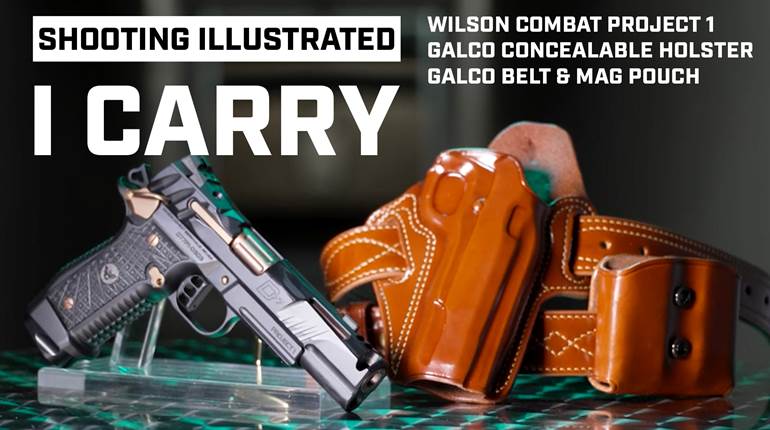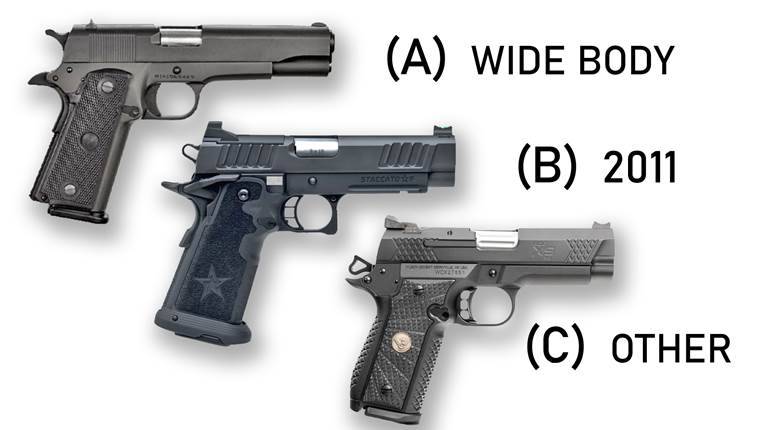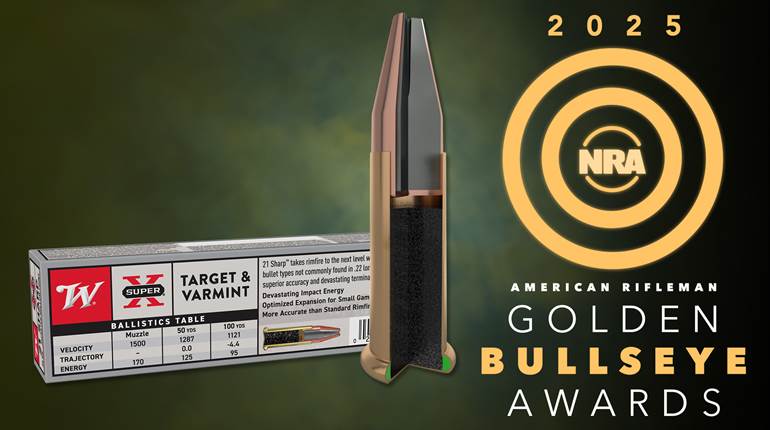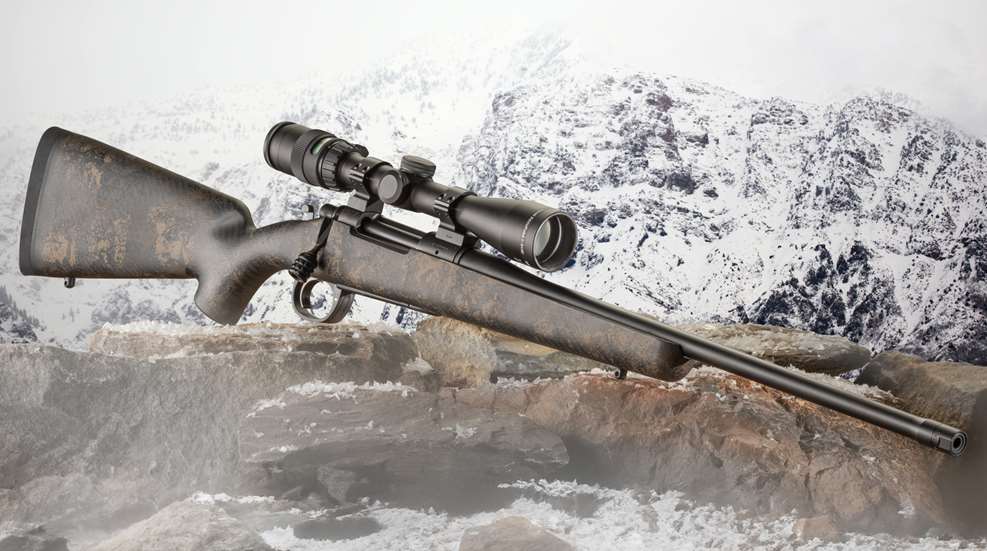
Plenty of people can make a lightweight rifle. Just buy a barrel that’s clothespin-thin, shave excess metal from the action and use lightweight materials for the stock and components, and congratulations, you have a lightweight rifle! Unfortunately, however, you probably won’t have a good-shooting lightweight rifle.
Certainly there are a lesser number of gunsmiths who can make lightweight rifles that can shoot two or three shots reasonably well before starting to string as the barrel heats up. Then there are those rifles that shoot reasonably well, but are horribly unbalanced, wobbly on target and kick like hell’s horse, because all attention was focused on eliminating weight and not about the distribution of that weight. The point is, it’s one thing to build a lightweight rifle—it’s another thing entirely to create one that is purpose-built to shoot accurately and consistently and that handles like a hunting rifle should handle.
During the past 40 years, the hunting rifle market has witnessed a trend toward extreme-lightweight rifles sometimes dubbed mountain rifles. There is one man who is considered the unanimous godfather of this niche. That man’s name is Melvin Forbes, of Granville, W.Va.
The Pioneer Of The Modern Mountain Rifle
Since 1985, Forbes has been building and selling custom, sub-6-lb. rifles (his short-action Model 20 weighs less than 5 lbs.) mostly by hand in his modestly equipped machine shop under the banner of Ultra Light Arms, Inc.
His rifles are so light that shooters are often taken aback when they first hold one. That’s because the mind, via experience, anticipates the weight that the body is about to lift. Forbes’ rifles trick the senses in that each one looks to be of average size and average weight, but, in fact, weighs 2 or 3 lbs. less. The effect is that the muscles get geared up for lifting more weight than is necessary, and the rifle feels like it almost floats as a result.
“Wow, this thing is light!” is the dumbfoundingly obvious and inevitable reply.
I can only guess how many times a smiling Forbes has heard this line while attending trade shows and NRA Annual Meetings, and I have a feeling that it never gets old for him. But, as I touched on earlier, it’s not the weight alone that makes his rifles special—almost magical, even. How Forbes can reduce a rifle’s weight by 40 percent and have it look the same but shoot better is the essence of his craft.
At his business’s high-water mark, when a total of seven staff manned the shop, Forbes delivered around 150 rifles per year for a significantly smaller number of people. How is this possible? Seventy-five percent of his clientele are repeat customers. That should tell you something.
What’s his secret sauce? Precision machining, attention to detail, great barrels, thorough testing, continual R&D, honesty, fair pricing and, namely, a revolutionary handmade stock that was originally built with the help of the authority on carbon-fiber technology, Allegheny Ballistics Laboratory, located in Rocket Center, W.Va.
“To put it in perspective,” Forbes said in an interview for this article, “I spent a weekend producing the first Model 20 action. But I spent four years on the stock.”
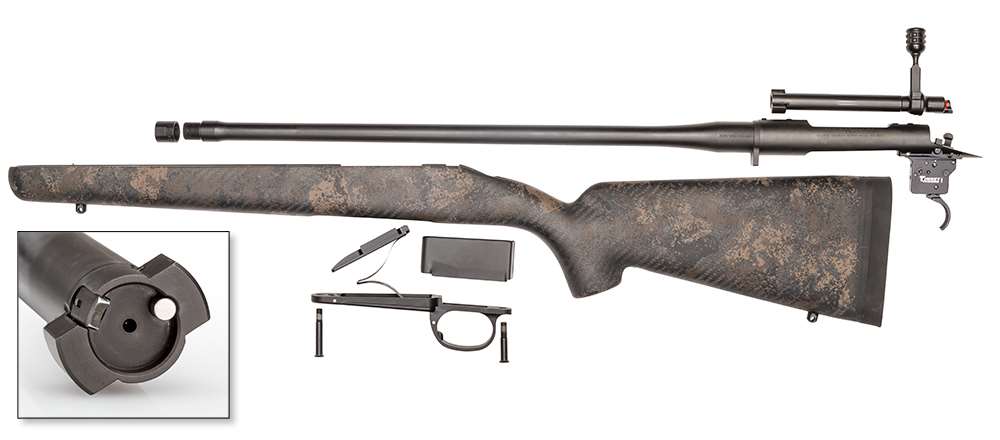
What makes the stock so special? Incredibly, layers of carbon fiber, a yard of Kevlar and epoxy combine to actually make the 8-oz. stock (not including screws or the recoil pad) stiffer than the barrel. Realizing this fantastical phenomenon of physics, Forbes utilized a full-length bedding technique (the opposite of free-floating) that served to enhance barrel stiffness and mitigate consistency-robbing harmonics—harmonics that change as barrels heat up and metal expands, becoming more whippy. Secondly, he utilized a negative drop at comb to direct recoil straight back to the shoulder, sliding past the cheek bone rather than walloping it. Forbes designed the butt to feature maximum surface area to spread out the recoil impulse across the shoulder pocket. The result was the lightest, strongest and most modest-recoiling stock ever invented. The only problem? Such a high-tech, handmade stock is labor-intensive, time-consuming, not easy to automate and, therefore, expensive to produce.
After a couple of company buyouts went awry (Colt was one in 1999, another was Titan Machine Products in 2010) the rifle wizard of West Virginia subsequently bought his baby back with the caveat that it had to be re-named. Forbes chose New Ultra Light Arms, or NULA for short. He kept on doing business as usual, although orders were coming in steady even as Forbes began to slow down a bit with some family health issues. In late 2021, a dear friend, gunwriter and fellow West Virginian named Richard Mann visited the soft-spoken Forbes where the two talked candidly about rifles, family and his future plans for NULA.
It’s no coincidence that soon afterward Bill Wilson of Wilson Combat called Forbes, inquiring about the possibility of buying it. The two quickly met face to face—it turned out that Wilson’s wife went to the same high school in West Virginia as Forbes—and after a brief round of offers and counteroffers in 2022, a deal was struck. Wilson would own the rights to produce any new NULA rifles under the Wilson Combat name; Forbes’ three remaining employees would retain the right to service the nearly 7,000 rifles already in existence.
Wilson Combat And The NULA Production Rifle
I believe people toss out the term “genius” too liberally these days, but you’ve got to be at least part genius if, as in Wilson’s case, you can take age-old gun designs such as the M1911, AR-15 and Remington 870 and slick them up so much that people will spend four times what non-”Wilsonized” versions cost and come back for more. Wilson Combat of Berryville, Ark., was one of the first companies to improve existing guns and, thanks to a reputation earned over 45 years in business, like Forbes, it created a new niche. These days, the firm now has approximately 275 employees and builds most of its components—even complete guns—in-house. Basically, if Wilson touches a gun, it will be more accurate, smoother, better-looking and more reliable than the original. That’s the main reason why Wilson Combat is very popular—legendary, even—among competitors and professionals who stake their lives and livelihoods on their guns every day. One product that was missing from Wilson’s growing catalog, however, was a top-quality lightweight bolt-action rifle. Now, as a result of the agreement with New Ultra Light Arms, he has one: the Wilson Combat NULA Model 20. It’s very similar to the hand-made original, although it differs in a few areas to keep its cost reasonable in the current economy where materials, labor and taxes are crippling.

Namely, it forgoes Douglas barrels in favor of Wilson Combat’s own button-rifled barrels made from 416R stainless steel. The Model 20’s 0.685"-diameter tube flares to 0.750" at the muzzle to accept threading for a brake or suppressor. Double stress-relieved, it’s top-notch in all regards down to its proprietary Armor-Tuff matte finish. Mainly, it has proven to be accurate or else Wilson Combat could not stake its accuracy guarantee and reputation upon it.
Secondly—and this is perhaps the only thing Forbes and Wilson don’t entirely agree on—the initial model has ditched Forbes’ hand-laid Kevlar/carbon-fiber stock in favor of an outsourced 1-lb., 10-oz., carbon-fiber stock made by AG Composites. The barreled action is pillar-bedded into the stock utilizing one 0.185"-thick recoil lug and is fully free-floated forward of the chamber.
“These days, we do pillar bedding extremely well,” said Wilson, matter-of-factly.
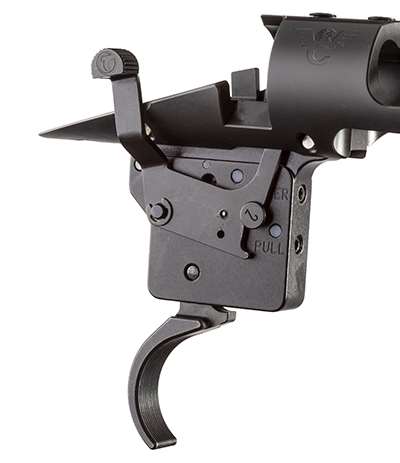
Although this departure must rile Forbes at least a little, there’s little mystery why the change was made: Production rifles must be produced consistently and perfectly by automation, every time, or else they cannot be duplicated in a manner that is predictable, consistent and cost-effective. Pillar bedding, made precise by modern CNC machining, is faster, 100-percent repeatable, accurate and cost-effective. Its downside? While pillar bedding is demonstrably capable of producing sub-moa groups with little to no hand-tuning after assembly—assuming the design and components are sound—rifles with ultra-thin barrels can be susceptible to shot stringing and point-of-impact shifts with various ammunition.
My tests—although limited in scope because I only had one 16.25"-barreled .308 Win. Wilson-made NULA rifle (a 20"-barreled version is pictured here for art purposes) to sample against an original NULA rifle—suggested as much. With a couple types of ammo, it shot sub-inch groups, yet with other types it shot 1" to 1.75" groups while also varying in point of impact. This concerns me very little, however, as any hunter worth his salt systematically tests a variety of ammo before making a selection and zeroing the scope accordingly.

On the flip side, however, there are many functions that Wilson Combat’s state-of-the-art manufacturing methods—such as electrical discharge machining (EDM)—do much better than older methods. Just one example is the new rifle’s EDM-cut action that makes bolt travel even smoother and, therefore, faster than the old rifle. Another advantage? When Forbes sold his company to Wilson in 2022, he had 100 orders placed for rifles costing $4,295 each. Wilson’s NULA production rifle costs $2,995. That’s the magic of modern machinery.
“Certainly, Bill and I might do a few things differently, but Patty (Forbes’ wife) and I are happy campers and are glad to pass the torch to such a capable company,” Forbes said, who won NRA Publications’ coveted Golden Bullseye Pioneer Award in 2011 for influencing the entire shooting industry. Guess who won the award in 2023? That’s right, Bill Wilson.
Introducing Wilson Combat’s NULA Model 20
In both essence and practical application, Wilson’s NULA rifle is a Melvin Forbes rifle; it’s a handy, 5-lb. wand (a few ounces more or less, depending on the cartridge and barrel length chosen) that balances between the hands and is guaranteed to shoot sub-inch groups with select ammo. As such, it’s perfect for everything from treestand hunting to mountain treks for sheep—especially now that it’s threaded for a suppressor and is so easy to tote on an ATV.
Each rifle features Forbes’ proprietary Model 20 receiver and bolt that have been starved for width and weight while remaining absolutely safe. Indeed, the bolt’s diameter, at 0.585", is only a hair wider than a .308 Win. cartridge case. It features a two-lug, push-feed design and a Sako-style extractor and plunger ejector. In shooting more than 200 rounds for this article, feeding and extraction were 100 percent. And while I am not going to write that recoil is “nonexistent,” as gunwriters often do, recoil is strangely softer than physics suggests it should be. You have to shoot the rifle to feel how surprisingly well it can be held on target and how softly it recoils compared to its weight to fully appreciate it. Forbes’ magic flows throughout.
While the original NULA 20 featured a blind magazine, Wilson’s AG stock allows the addition of a hinged floorplate/bottom metal that’s made of hard-anodized aluminum and weighs just 4.5 ozs. in total. The magazine holds four rounds rather than the three of old. All NULA rifles feature Timney’s outstanding Elite Hunter trigger that is user-adjustable for overtravel and pull weight from 2 lbs., 12 ozs., to 3 lbs., 4 ozs. It features a two-position, M700-style safety that locks the bolt closed when in the safe position. Quite simply, the trigger is tops and is a critical component in terms of accuracy on such a lightweight rifle where any deviant squeeze or errant follow-through is magnified downrange. Finally, each NULA rifle comes with Talley monolithic scope rings that weigh just 2 ozs. per set.
Living semi-retired in northern Texas as his son-in-law runs the day-to-day business in Arkansas, Bill Wilson spends most of his days tinkering with and testing what has become his latest obsession, the NULA project. At the time of this writing, his company offers the NULA rifle in: .243 Win. or 6.5 mm Creedmoor with a 20" or 22" barrel; 7 mm-08 Rem. with a 16" or 20" barrel; and .308 Win. or .358 Win. with a 16.25" or 20" barrel. I was told that a long-action Model 24, as well as a shorter 20S version (.223 Rem., 6 mm ARC, .300 Blackout, etc.), are already in the works.
Meanwhile, Melvin Forbes has finally retired, but I believe he’s enjoying his legacy. While none of us will live forever, a select few will be etched in the history books as having influenced—pioneered, even—an entire industry. To build a featherweight rifle that’s supremely accurate, easy-to-shoot and now in production for $1,300 less than the original … now that’s a legacy American riflemen can not only appreciate, but actually measure!












